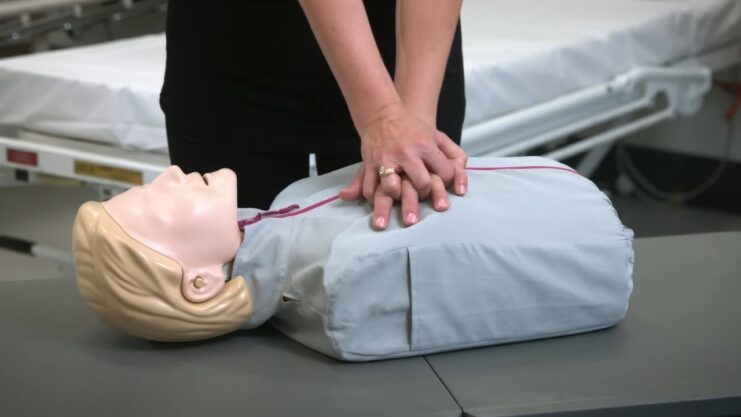CPR—Cardiopulmonary Resuscitation—is a skill that everyone should be equipped with, as it can be the pivotal factor between life and death in an emergency situation. In this guide, we’ll provide a detailed walkthrough of how to obtain or renew your CPR certification, a move that not only enhances your ability to act in critical moments but also serves as an investment in the well-being of your community and loved ones.
Why CPR Certification Matters
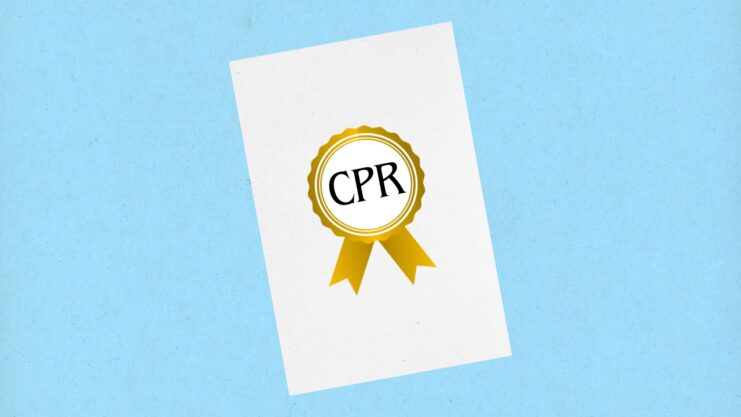
The importance of CPR certification extends far beyond the healthcare setting—it is a crucial skill for individuals in all walks of life. When someone suffers from a sudden cardiac arrest, their survival hinges on how quickly they receive CPR. Statistics from the American Heart Association indicate that immediate cardiopulmonary resuscitation can double or even triple a person’s chance of survival.
But here’s the sobering reality: less than 3% of the U.S. population receives CPR training annually, meaning that in an emergency, the likelihood of a bystander being able to provide life-saving assistance is perilously low. Certification in CPR equips you with not just the knowledge of what to do, but the confidence to perform it under pressure, which is paramount. It’s about transforming from a passive onlooker to an active lifesaver.
Choosing the Right CPR Certification Course
When it comes to CPR certification, one size does not fit all. Various courses cater to different needs and depth of knowledge. For healthcare professionals, certification courses often delve into intricate aspects of cardiopulmonary resuscitation and emergency cardiovascular care. In contrast, community-focused courses concentrate on fundamental skills that can be applied in everyday situations.
To choose the right course, assess your specific requirements. Do you need a basic understanding, or is a comprehensive course more applicable to your profession? Also, it’s essential to ensure that the certification is provided by a reputable organization like MyCPR NOW.
Course Prerequisites and Eligibility
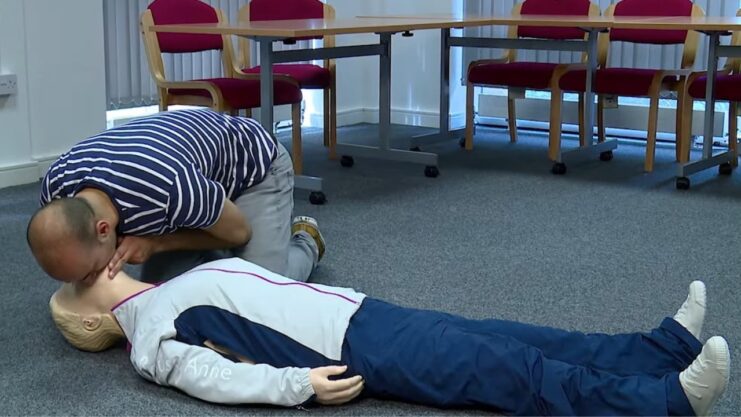
While the majority of CPR courses are designed to be accessible to anyone regardless of prior knowledge, some advanced classes may have prerequisites such as a basic life support (BLS) certification. It’s crucial to check if there are any such requirements before enrolling. Eligibility is usually broad for most CPR courses, welcoming anyone from teenagers to seniors, emphasizing the philosophy that the ability to save a life is a universal skill.
Whether you are a gym instructor, an office worker, or a grandparent, there is a cardiopulmonary resuscitation course suitable for your needs. By ensuring that you meet the prerequisites and choose the right level of certification for your circumstances, you will be better equipped to provide effective assistance should an emergency arise.
Online vs. In-Person Certification
In today’s digital age, CPR certification can be obtained either online or in person, and each has its merits. Online courses offer convenience and flexibility, allowing participants to complete modules at their own pace. They’re particularly beneficial for those with busy schedules or limited access to in-person classes.
However, the practical nature of cardiopulmonary resuscitation often means that in-person training can be invaluable, providing hands-on experience with manikins to simulate real-life scenarios. Direct feedback from certified instructors can also enhance the learning process. When deciding between the two, consider your learning style and schedule.
Finding Accredited Training Centers
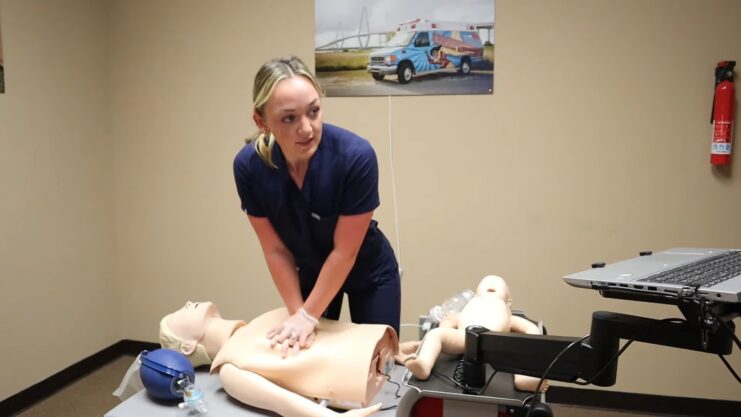
Selecting a credible training center for your CPR certification is paramount. Accredited organizations offer standardized training that’s accepted across various institutions and professions.
To find a training center near you, a quick online search of accredited providers or checking with local hospitals and community centers can yield results. Also, consider asking for recommendations from colleagues or healthcare professionals who’ve recently completed their certification.
CPR Certification Process
The process of getting cardiopulmonary resuscitation certified is straightforward but thorough. Typically, it starts with selecting the appropriate course and registering, which can often be done online.
Once you’ve registered, you’ll attend the training sessions, which may vary in length from a few hours to a couple of days, depending on the course level. During the course, expect to learn about the latest CPR techniques and guidelines, how to recognize when CPR is needed, and how to use an Automated External Defibrillator (AED).
Course Content and Curriculum
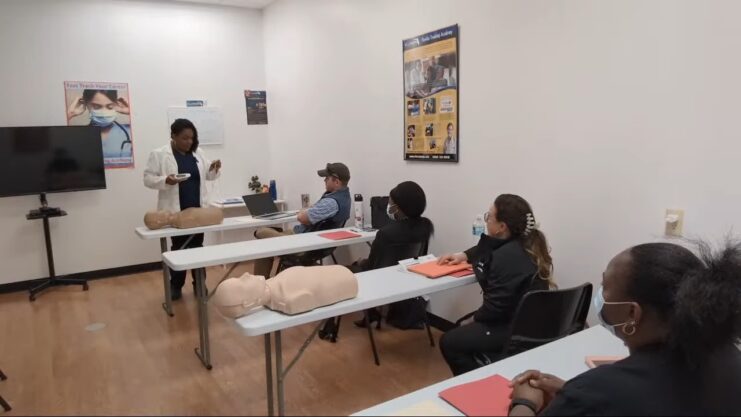
A standard CPR certification course covers a variety of crucial topics. Participants learn how to recognize the signs of a heart attack, cardiac arrest, and choking in adults, children, and infants. The curriculum also includes instruction on how to perform chest compressions and ventilations effectively.
Advanced courses may cover additional topics like using an AED, delivering cardiopulmonary resuscitation in a professional healthcare setting, and performing two-rescuer CPR. By the end of your course, you should feel confident in your ability to provide CPR in a wide range of emergency situations.
Hands-On Training and Practice
Practical training is a core component of any CPR course. This hands-on practice is vital for building muscle memory and ensuring you can perform cardiopulmonary resuscitation effectively in a high-pressure situation. During these sessions, you’ll practice on manikins to simulate real-life rescue scenarios, allowing you to get a feel for the proper technique and force required for chest compressions.
Similarly, in physical therapist training programs, hands-on exercises play a crucial role. These practical sessions help students develop the necessary skills and tactile sensitivity required for effective patient care, ensuring they can confidently apply therapeutic techniques in diverse clinical settings.
Written Exam and Assessment
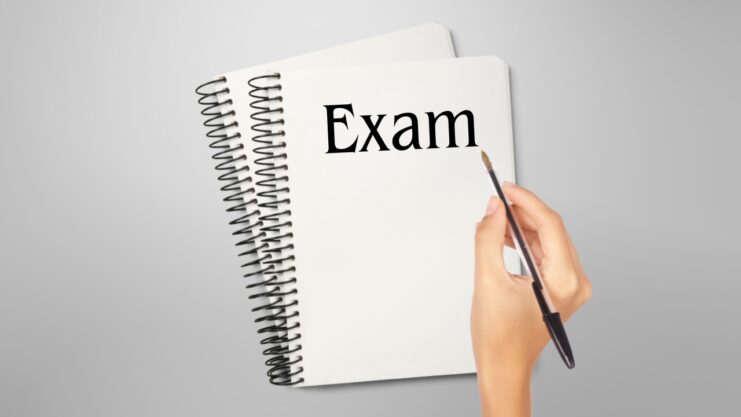
Most CPR certification courses culminate in a written exam that tests your knowledge of the procedures and techniques learned. The assessment may include multiple-choice questions, true/false questions, and scenario-based queries that assess your ability to apply CPR knowledge in real-world situations.
To prepare, review the course materials, take practice tests if available, and study in groups if possible.
Renewal and Recertification
CPR certifications are typically valid for two years. Staying current with cardiopulmonary resuscitation techniques and guidelines is essential, as they can and do change. Renewal courses are often shorter than initial certification courses and provide updates on any new procedures.
Keep track of your certification expiration date and sign up for a recertification course in advance to ensure there’s no lapse in your qualification.
Conclusion
CPR certification is more than just a credential; it’s a responsibility and a statement of your willingness to act in the face of emergencies. With the information provided in this guide, you are now equipped to embark on the path to becoming cardiopulmonary resuscitation certified or renewing your skills.
Remember, the knowledge you gain has the power to make a life-changing impact. Don’t hesitate—take action today and join the lifesaving network of CPR-certified individuals.

